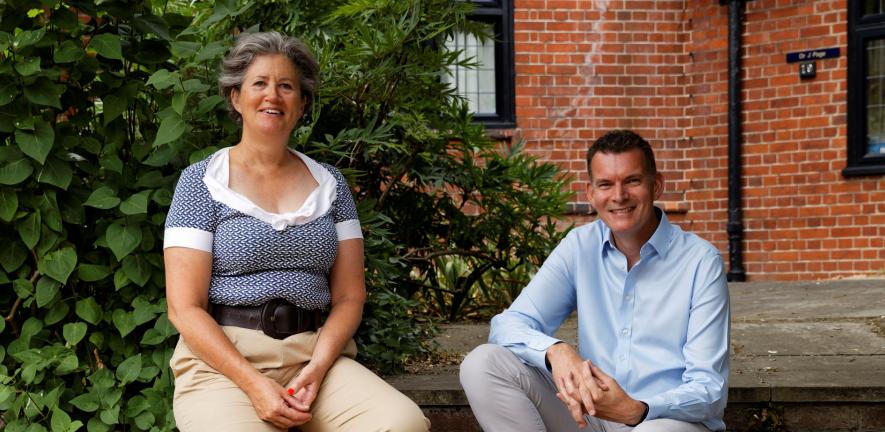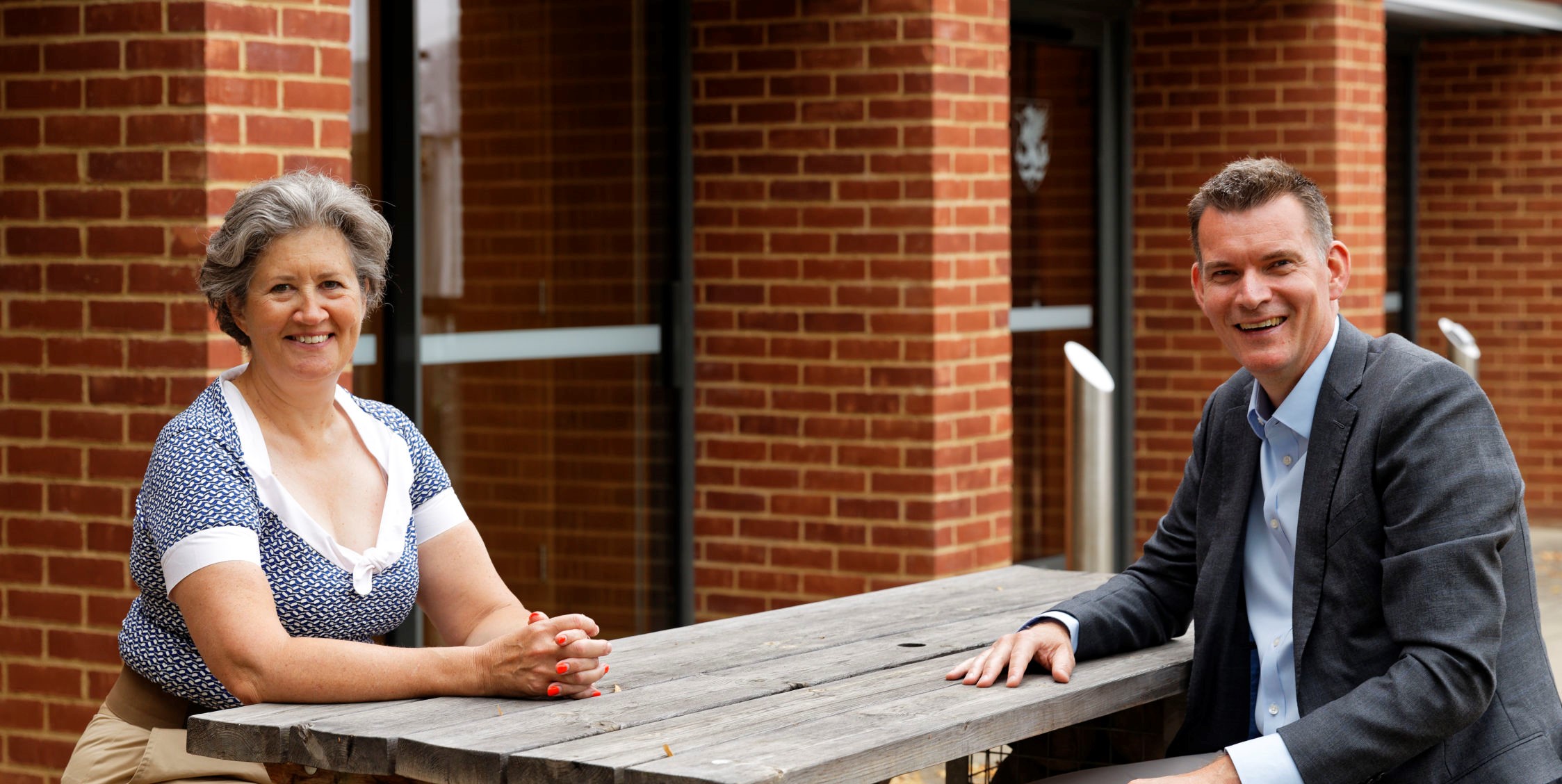
Let’s start from the beginning
Melinda’s research focuses on the molecular structures of biological tissues, such as bone, tendon and the extracellular matrix (ECM). These interests led her to found Cambridge Oncology with her former student, James Harrison, who studied at Robinson College where Melinda is a Fellow.
“So I still have her red pen on my Part I coursework somewhere in my attic,” jokes James.
After a successful career in the city, James founded Cycle Pharmaceuticals ten years ago, improving existing drugs that, in particular, treat children with lifelong and life-threatening genetic diseases. Their combined expertise makes a formidable combination in drug discovery and promises some exciting projects that are making their way to patient trials.
Cycle Pharmaceuticals
Cycle Pharmaceuticals has developed pharmaceutical products for rare metabolic diseases such as tyrosinemia, and recently launched a drug for phenylketonuria. Hundreds of children depend on Cycle medicines every day, including 30 children from developing countries that receive free-of-charge drugs. In 2023, Cycle will start treating multiple sclerosis patients.
Several years ago, Melinda and James began research into new uses of existing drugs. Their collaboration started when Melinda found a way to treat vascular calcification, or hardening of the arteries, but needed an expert on how to transform research into a product for patients.
“James not only understood the science but also understood the processes that could take our research and turn it into a real treatment that helps people,” comments Melinda.
This treatment for hardened arteries has entered clinical trials and was only the beginning of their collaboration. With Cambridge Oncology, they are looking at different problems and pioneering a new type of drug that combats cancer tumours by targeting their environment.
The Extracellular Matrix
The human body is made up of cells and they are held together in a scaffold called the extracellular matrix. This matrix is implicated in degenerative diseases, ageing, and the spread of cancer.
“It all started when we first chemically cross-linked a matrix,” comments Melinda, “and we were looking through the microscopes at these stationary cells, and I kind of glibly said ‘I wonder if we could do that for cancer cells.’”
“The ECM is the environment our cells exist in,” says Melinda. “Imagine the weather; certain plants thrive in different climates and wither in others. Instead of targeting the cancer cells directly, we are changing their environment so that they cannot survive.”
Cancer cells contain mutations that make them different from healthy cells, and the same is true for the ECM surrounding the tumour. Instead of targeting the tumour directly, Cambridge Oncology is aiming for the ECM.
James adds: “Our drug is making a cage around the tumour cells by cross-linking the ECM and making the environment more viscous. It makes it harder for the cancer cells to move and grow. They can’t draw energy from their environment so they go dormant or die.”

Melinda Duer and James Harrison at Robinson College taken by Nathan Pitt.
A drug for neurosurgeons
Cancer Oncology’s initial target is glioblastoma, a deadly and common form of brain cancer. Melinda and James realised this was a disease that they could meaningfully contribute towards since treatment for patients is so limited and life expectancy after diagnosis is not promising.
Animal testing is often a necessary first step in determining drug efficacy, and here, ethically conducted mouse trials were very successful. The new drug trapped cancer cells so they could not grow or migrate. The mice lived longer, maintained their body weight and generally showed healthy mouse behaviour. The next challenge was adapting the technology so that it could be used in humans.
The answer was a liquid that is applied to the brain directly by a neurosurgeon during surgery after a tumour has just been removed. The drug only interacts with the ECM around cancerous cells that remain in the brain tissue after surgery, so healthy brain cells are not at risk.
“A topical drug has the freedom to be designed solely to target the tumour without worrying about delivery through the bloodstream,” adds James. “It is a huge challenge to design drugs that can pass through the blood-brain barrier. It exists specifically to keep large molecules out!”
Successful models
The field of ECM manipulation is rich and largely uncharted. The potential of this emerging technology is untapped, and it is teams like Cambridge Oncology that can make headway into this unknown.
“With hard work and some luck, we hope to bring this treatment to clinical trials within the next 18 months,” adds James.

